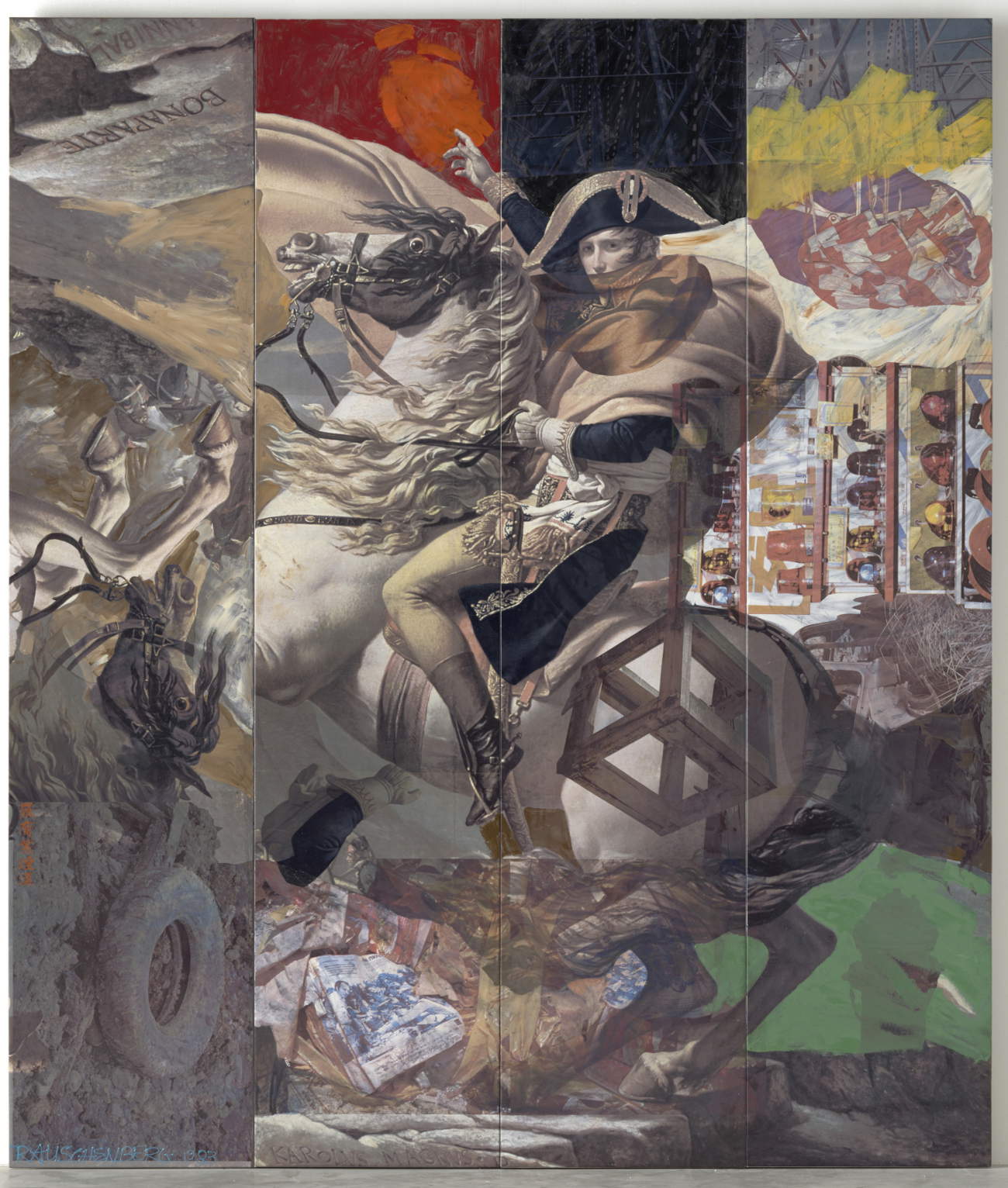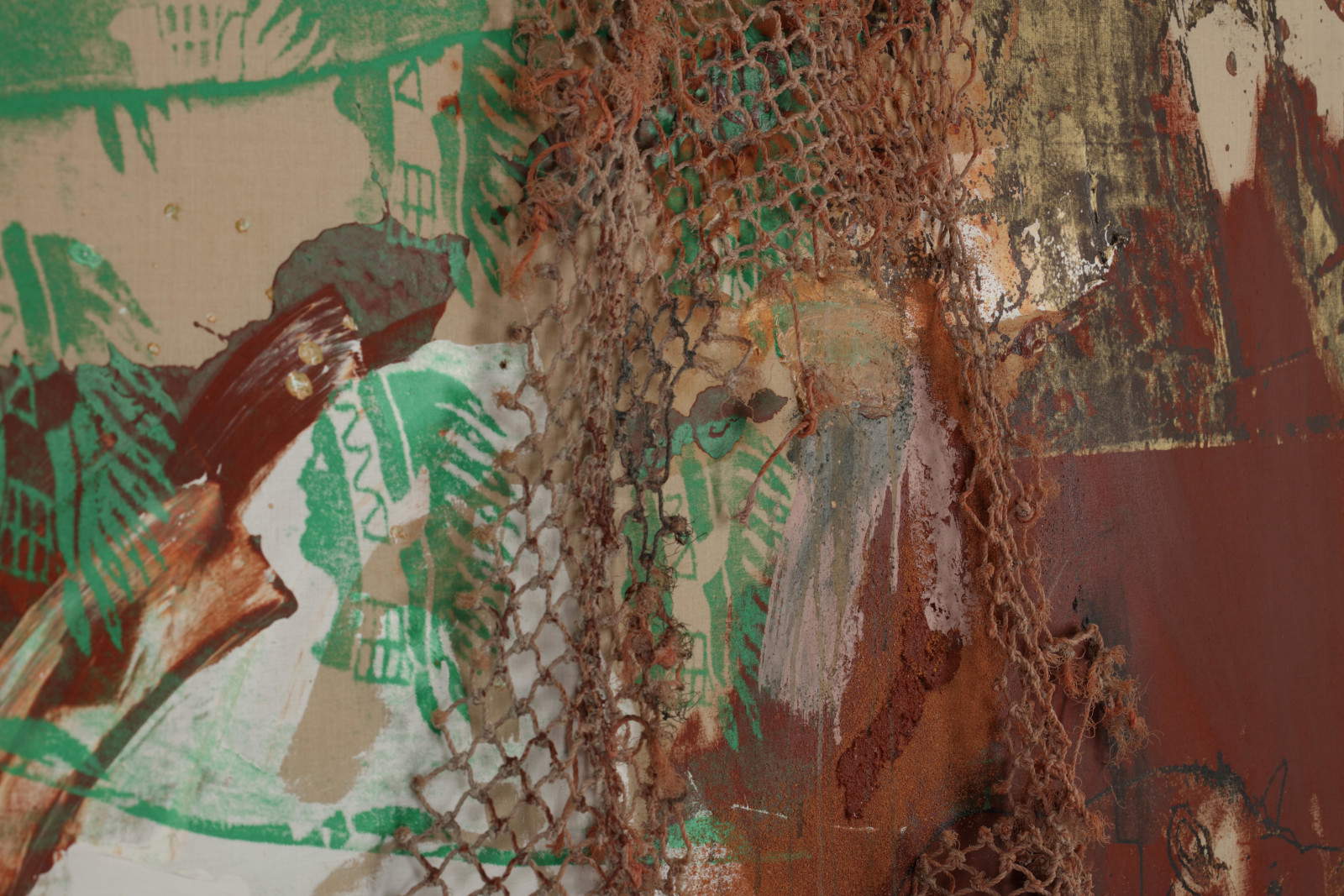On the centenary of the birth of Robert Rauschenberg (Port Arthur, 1925 - Captiva Island, 2008), the Museo del Novecento in Milan is hosting from April 5 to June 29, 2025 the exhibition Rauschenberg and the Twentieth Century, which, for the first time, places in dialogue the works of this artist and some of the most important masterpieces preserved in the museum’s collections. Part of the Milan Art Week program, the exhibition curated by Gianfranco Maraniello and Nicola Ricciardi with the support of Viviana Bertanzetti is organized by the association Arte Totale and promoted by the City of Milan - Culture, with the support of Fiera Milano and Marazzi Group. It represents the culminating moment of the initiatives related to miart, the international modern and contemporary art fair curated by Fiera Milano, which has dedicated its 29th edition precisely to Rauschenberg and his collaborative spirit, borrowing the title “among friends” from the latest retrospective dedicated to the American artist.
A key figure in the transition from modern to contemporary art, Rauschenberg always manifested an irrepressible curiosity and a strong interest in collaboration and the confrontation of ideas. At the Museo del Novecento, these elements emerge through a dialogue between his research and that of artists belonging to the main movements of the Italian twentieth century, from Futurism to Arte Povera, often juxtaposed in deliberately unexpected ways. His works, through overlapping visions, materials and artistic intentions, confront the Museum’s collections, creating direct connections, stylistic similarities or thematic affinities. The exhibition aims to reflect the boldness of those artists who, like Rauschenberg, experimented with new forms of expression, redefining the boundaries between painting, sculpture and everyday materials.
Thanks to the collaboration with the Robert Rauschenberg Foundation, the curators have selected eight works from all over Europe made by the American artist between the 1970s and 1980s.


The exhibition begins in the Futurism Gallery, which houses the largest collection of works from this early 20th-century movement. Here, the enthusiasm for speed and modernity celebrated by Giacomo Balla is echoed by one of Rauschenberg’s Gluts, a series in which the artist blends car wrecks and gas station remnants, reflecting on the oversupply of oil that led to the collapse of the price per barrel in the mid-1980s and the subsequent economic crisis.
Upstairs is Bonaparte Crosses the Great St. Bernard, a work by Jacques-Louis David reinterpreted by Rauschenberg in the 1980s. Placed between paintings by Mario Sironi and Carlo Carrà, the work, entitled Able Was I Ere I Saw Elba, is also in dialogue with Arturo Martini’s large sculpture, I morti di Bligny trasalirebbero, whose title refers to a speech by Mussolini on the complex relations between Italy and France in the 1930s.
Moving on, we come to the 1950s and the encounter between Rauschenberg and Alberto Burri, among the first to experiment with extra-pictorial materials in their works, such as plastic, iron and concrete. The Umbrian painter profoundly influenced Rauschenberg, who is present in the exhibition with one of his Cardboard, the 1970s series in which the artist uses pieces of cardboard not as a support, but as a material shown in its immediate valence as a waste element. Before arriving at the Gestures and Processes gallery, which brings together works from the 1960s to the 1990s and has recently been refurbished and rearranged, the itinerary explores the theme of presence and absence, time and memory. Sculpture of Shadow, a site-specific work by Claudio Parmiggiani for the Museo del Novecento, is symbolically reflected in one of Rauschenberg’s Phantom, a 1991 series in which silkscreened images on anodized mirrored aluminum emerge and disappear based on light and reflections.
The influence of Rauschenberg’s combine paintings on Nouveau Réalisme-characterized by a return to objecthood, a connection to urban folklore and theuse of unconventional materials-is highlighted in the next room, where a dialogue is created between works by Daniel Spoerri, Arman and Christo and one of Rauschenberg’s Spreads, works that mix transferred images, fabric collages and found objects.
In the room overlooking Piazza del Duomo, Jannis Kounellis’s Posa bianca and Posa vera, along with Mario Schifano’s imposing Festa cinese, frame Summer Glut Fence, one of the American artist’s last metal sculptures. Here, the chaos of everyday life merges with art through assemblages of discarded objects. Continuing along the museum route, a more intimate space relates Giulio Paolini’s conceptual works to the dreamlike dimension of one of Rauschenberg’s Hoarfrost. In this series from the 1970s, cotton and silk fabrics float gently, revealing images imprinted by the artist, materializing the ongoing search for beauty and the ineffability of art pursued by the Italian master of Arte Povera.
The exhibition concludes with a reflection on transformation: the material in the making in Gilberto Zorio’s Crogioli and the tension toward infinity in Eliseo Mattiacci’s Stratosferica dialogue with Rauschenberg’s ambitious ROCI project, made between 1984 and 1991. This traveling project, designed to foster intercultural dialogue, is represented in the exhibition by Onoto Snare / ROCI Venezuela (1985), a work that perfectly embodies the artist’s curious and collaborative spirit.
From assemblages to the fusion of images and found objects, from mirrored surfaces to research into the expressive value of the simplest materials, the exhibition underscores how the concept of contamination is at the beating heart of Rauschenberg’s practice.
Hours: Tuesday through Sunday 10 a.m. to 7:30 p.m.; Thursday until 10:30 p.m. Closed Mondays.

 |
| Milan, at the Museo del Novecento in dialogue Robert Rauschenberg and masterpieces of the 20th century |
Warning: the translation into English of the original Italian article was created using automatic tools. We undertake to review all articles, but we do not guarantee the total absence of inaccuracies in the translation due to the program. You can find the original by clicking on the ITA button. If you find any mistake,please contact us.